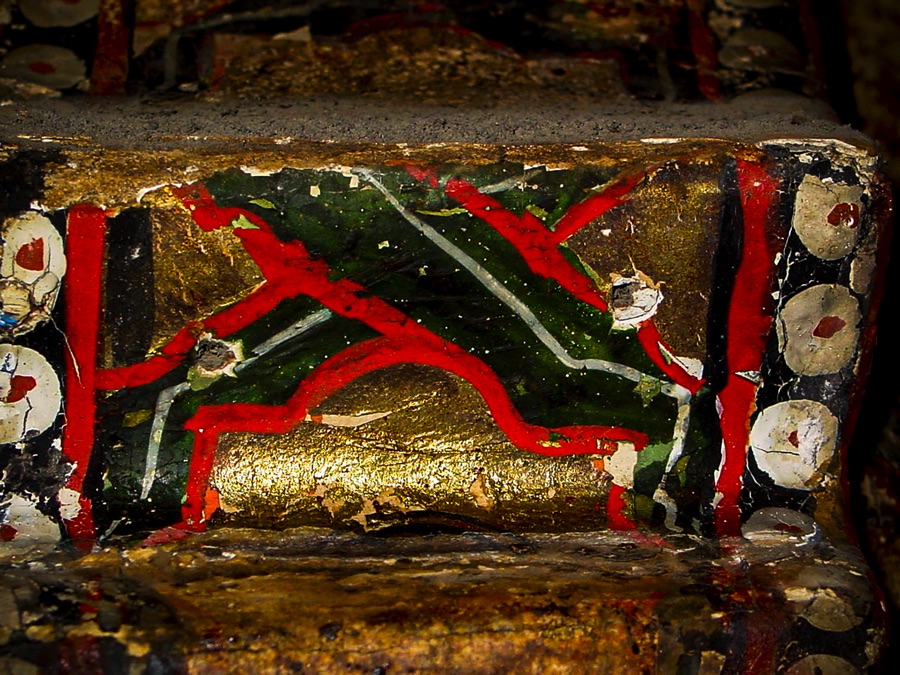The ceiling, made of painted wood, consists of two rows of central coffers, 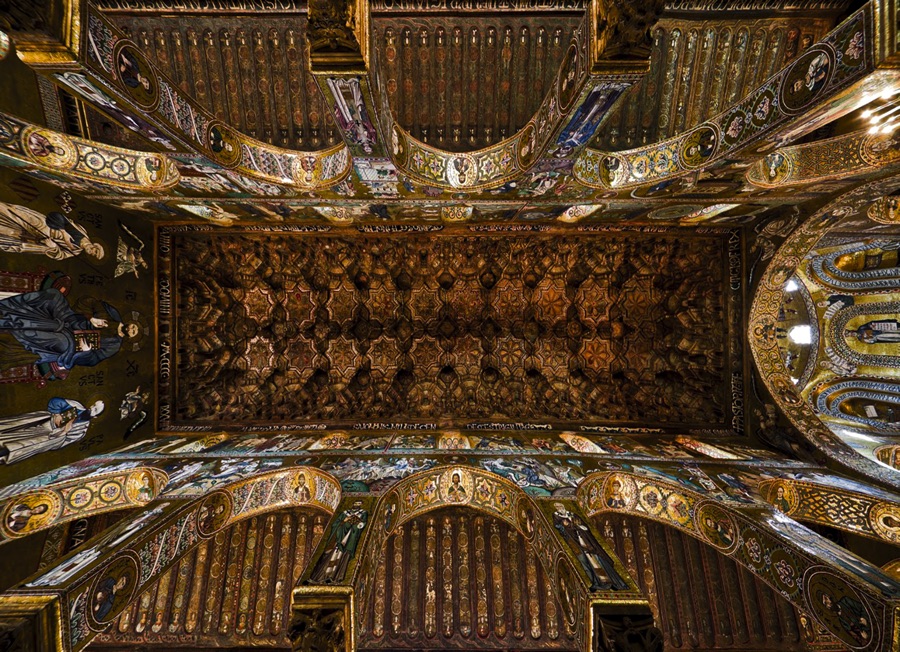 with concave lobes, flanked by small square or star-shaped coffers; the system is made of alveoli
with concave lobes, flanked by small square or star-shaped coffers; the system is made of alveoli 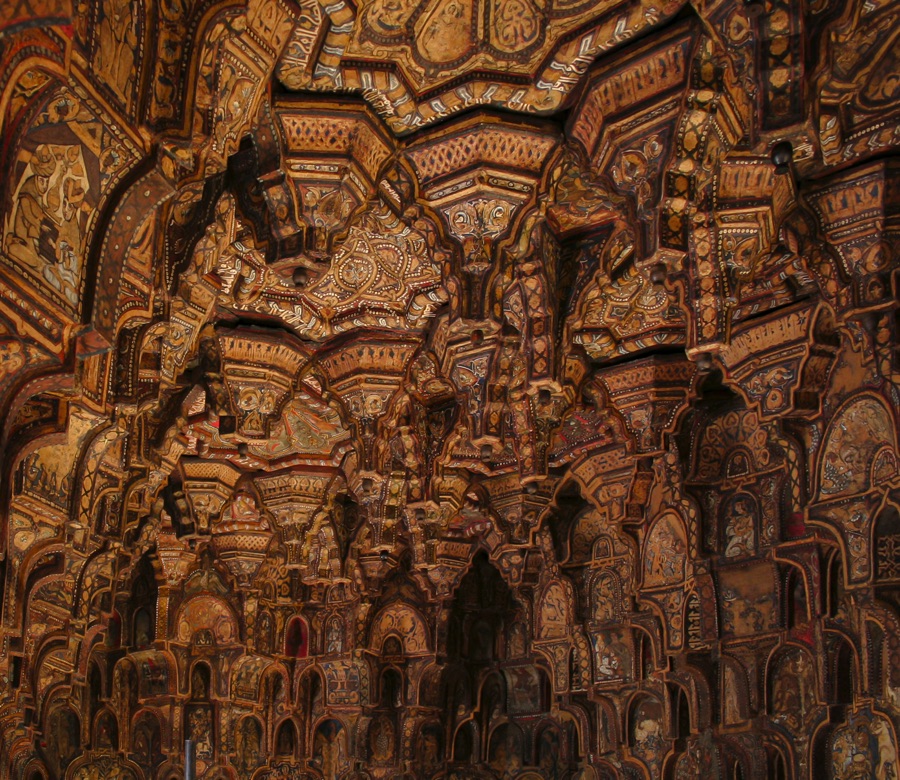 and
muqarnas
and
muqarnas
, typical of Islamic architecture.
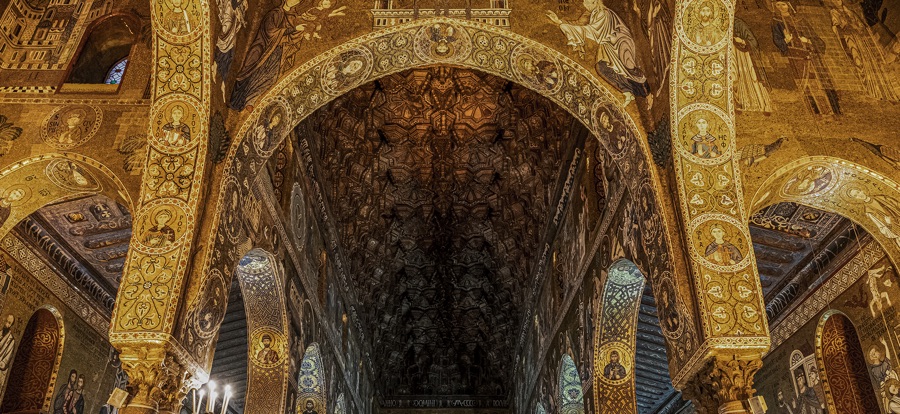 We note, in particular, that the
nave
We note, in particular, that the
nave
the central aisle is decorated with muqarnas, which form the geometric structural base,
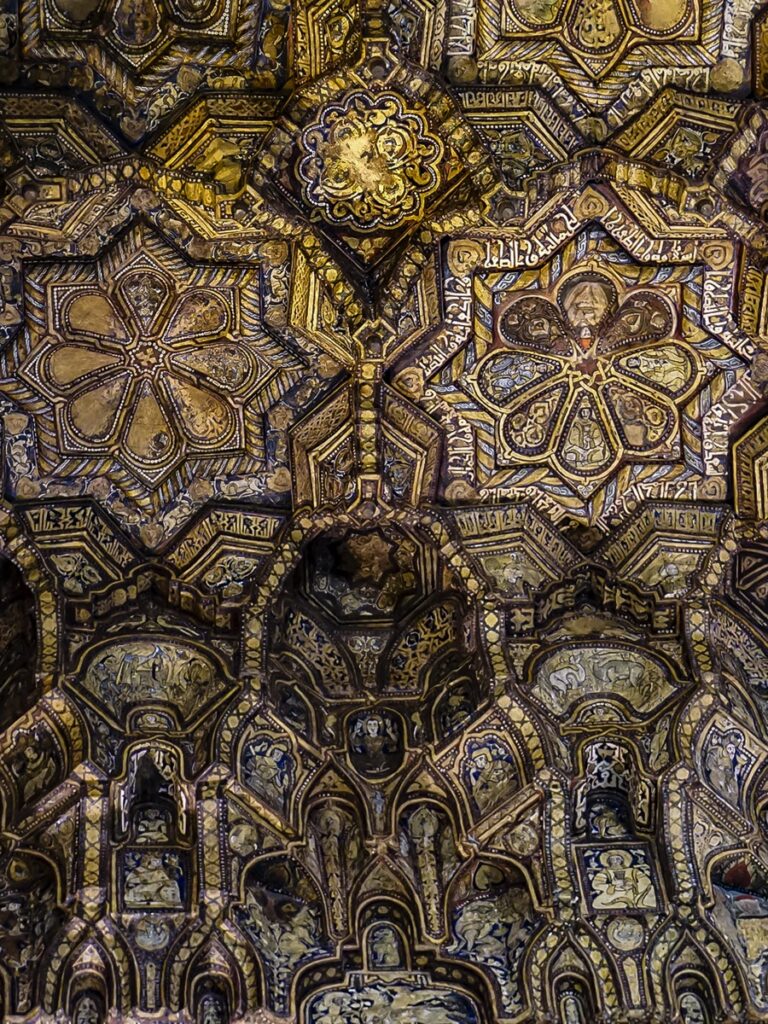 starry polygons and small domes, the latter made of thin boards.
starry polygons and small domes, the latter made of thin boards.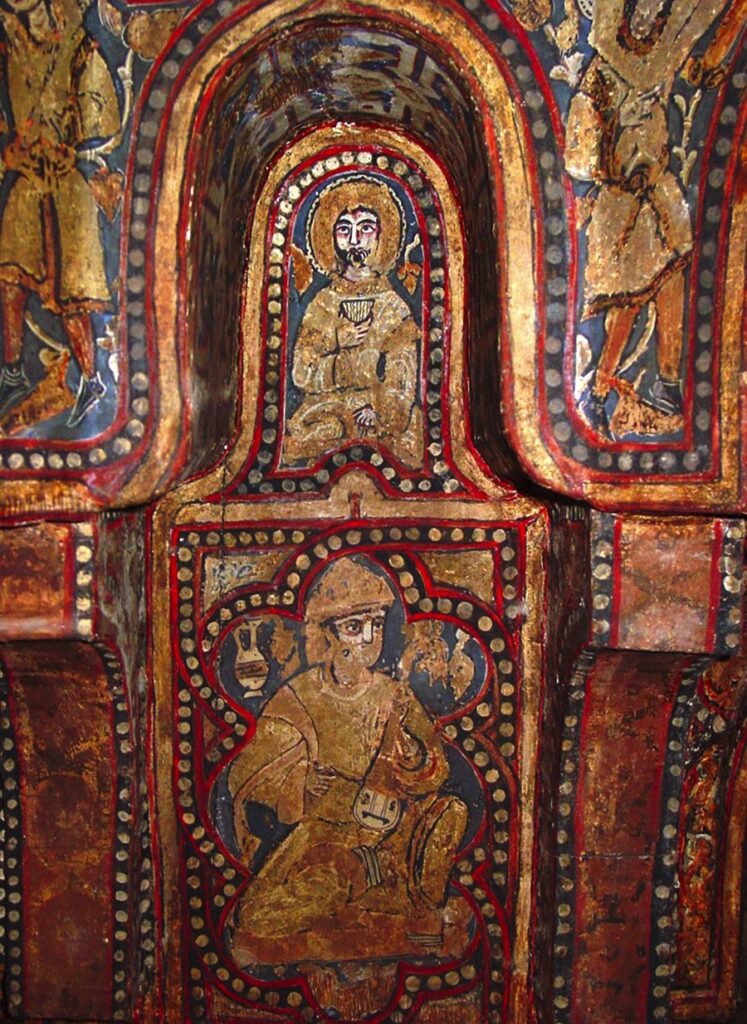 In the side aisles, long panels of sloping rafters form a coffered ceiling with alternating flat and concave bands.
In the side aisles, long panels of sloping rafters form a coffered ceiling with alternating flat and concave bands. 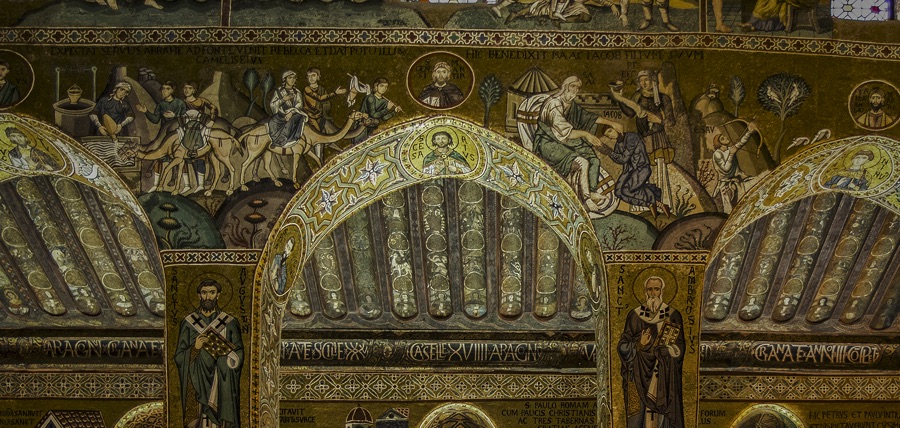
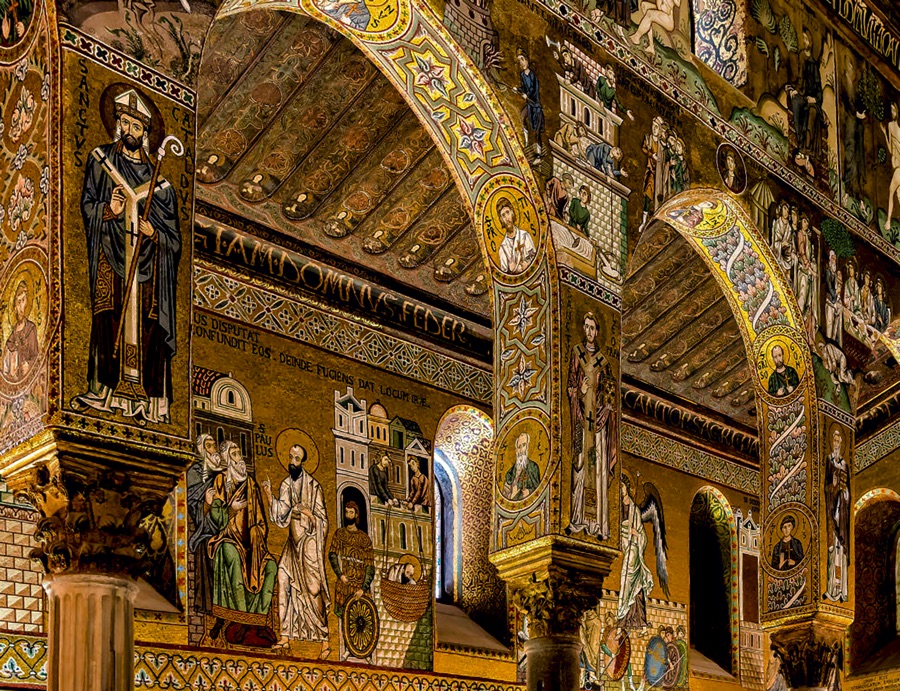 Entirely painted, they have semicircular endings with depictions of half-figures. The ceilings of the two naves have undergone extensive restoration due to the state of degradation caused by water damage.
Entirely painted, they have semicircular endings with depictions of half-figures. The ceilings of the two naves have undergone extensive restoration due to the state of degradation caused by water damage.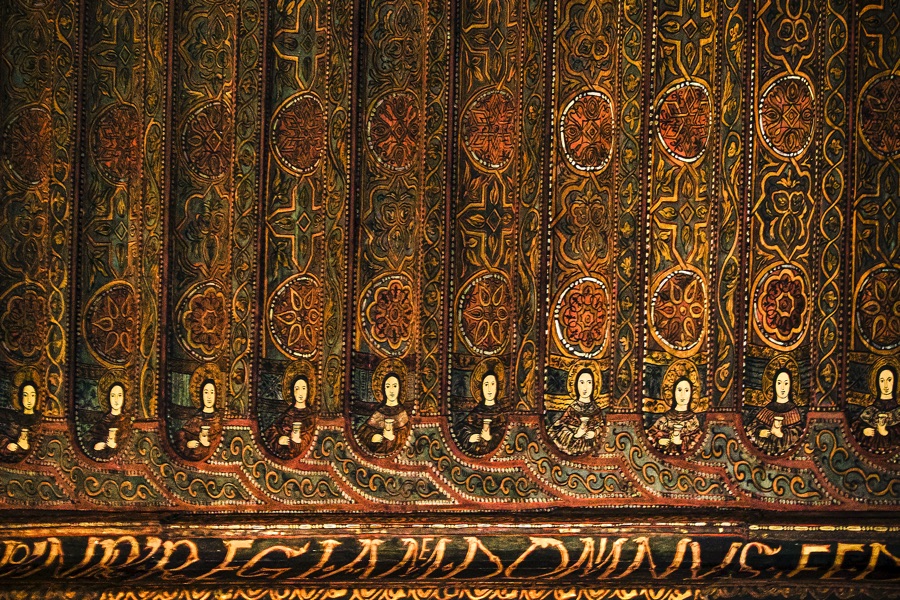 Some of the reconstructions, of Iberian origin, date back to the 15th century.
Some of the reconstructions, of Iberian origin, date back to the 15th century.
The specialised workers excelled in woodworking, as each element of various shapes and sizes is cut, assembled and worked according to a precise order and technique,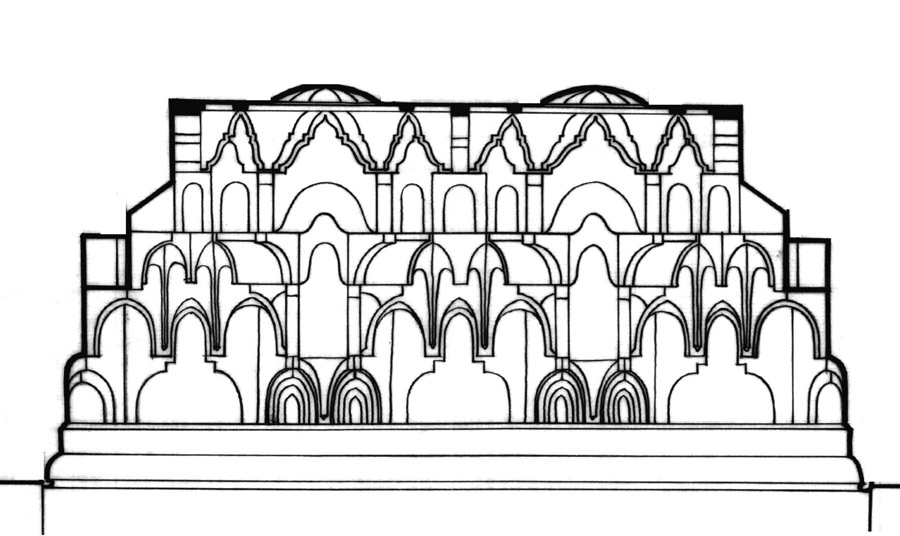 demonstrating an extensive knowledge of the physical and mechanical characteristics of the materials used. In fact, the interlocking of the elements that form a stable, self-supporting and balanced mechanism is skilful. The wood used in the ceiling ranges from
fir
demonstrating an extensive knowledge of the physical and mechanical characteristics of the materials used. In fact, the interlocking of the elements that form a stable, self-supporting and balanced mechanism is skilful. The wood used in the ceiling ranges from
fir
, black pine, poplar and beech.
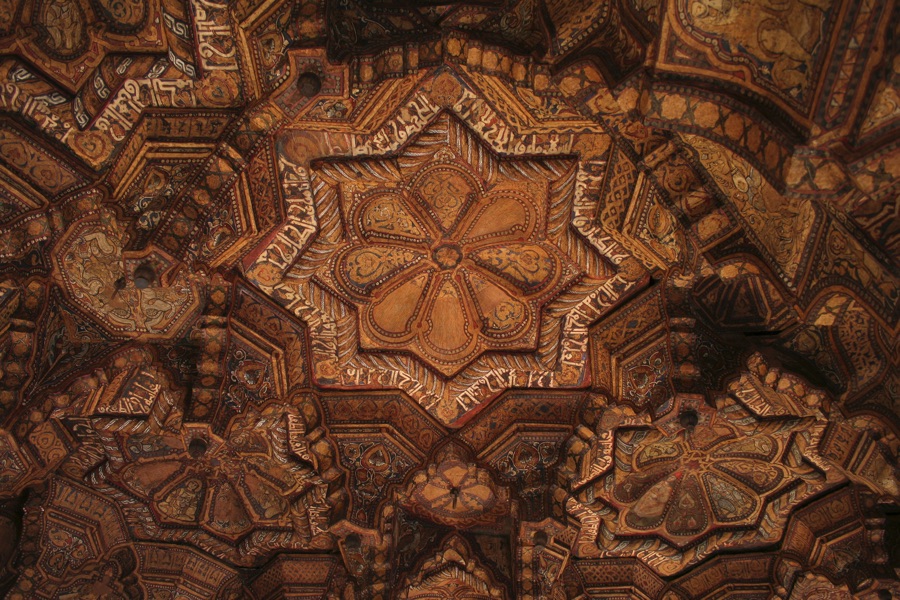 The recurring theme of the painting cycle, rich in symbols, allegories, plant and floral motifs, geometric designs, kufic characters, auspicious inscriptions, phytomorphic and zoomorphic elements, is that of the pleasures of life and the exploits of the court.
The recurring theme of the painting cycle, rich in symbols, allegories, plant and floral motifs, geometric designs, kufic characters, auspicious inscriptions, phytomorphic and zoomorphic elements, is that of the pleasures of life and the exploits of the court.
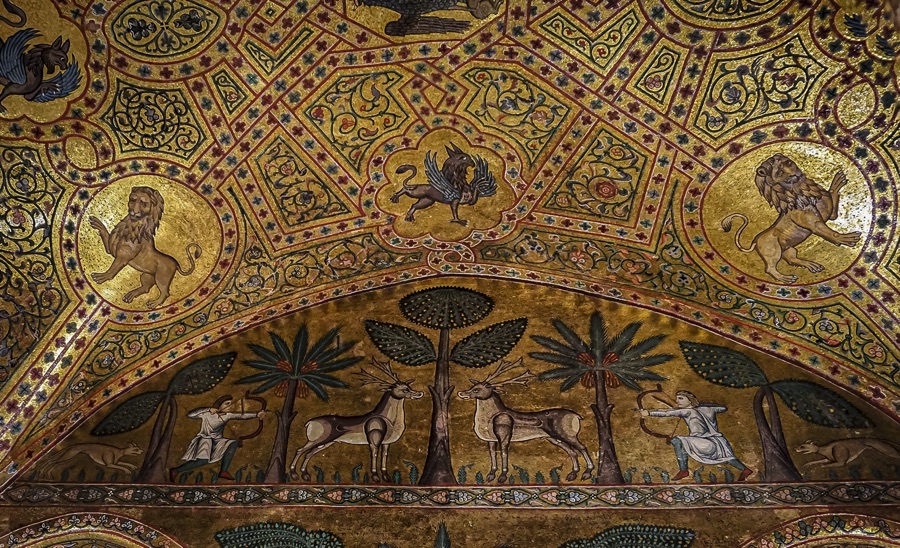 Taken from a vast iconographic repertoire, drawing on Islamic and Western motifs,
Taken from a vast iconographic repertoire, drawing on Islamic and Western motifs,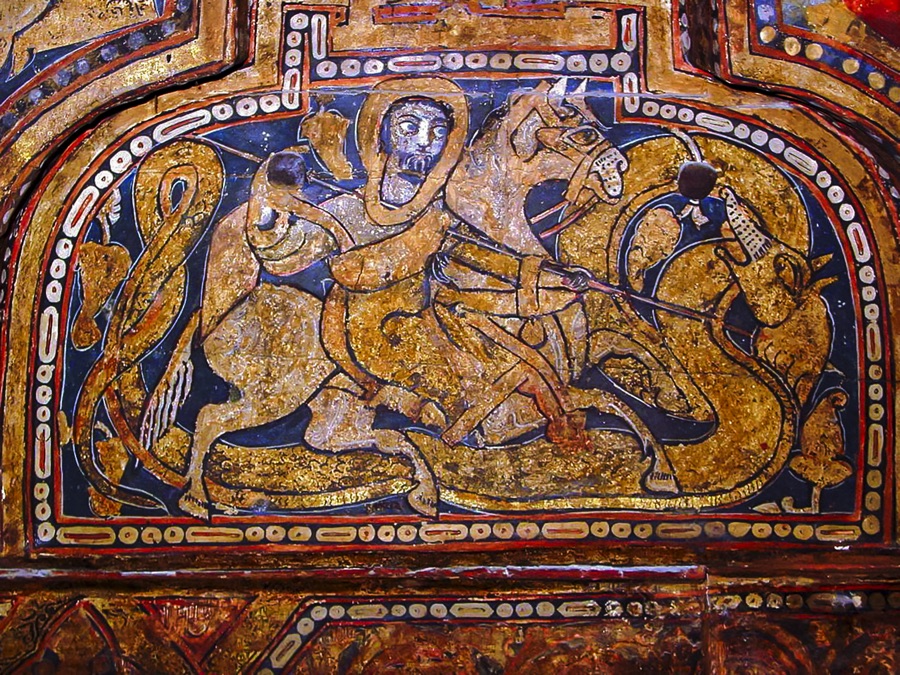 the paintings depict musicians, drinkers,
the paintings depict musicians, drinkers,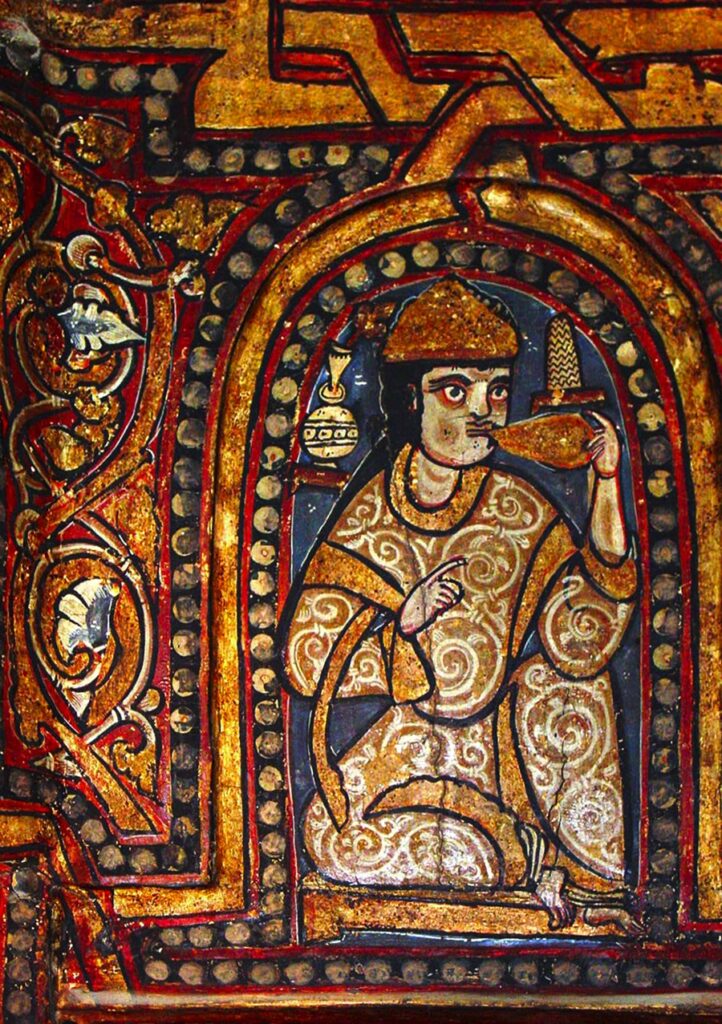 dancers, animals, mythological motifs and also highly realistic scenes of everyday life such as hunting and symposium scenes, jousts, processions, races and fights. The depiction of the sovereign or other rulers and patrons in oriental clothing and poses is also original.
dancers, animals, mythological motifs and also highly realistic scenes of everyday life such as hunting and symposium scenes, jousts, processions, races and fights. The depiction of the sovereign or other rulers and patrons in oriental clothing and poses is also original.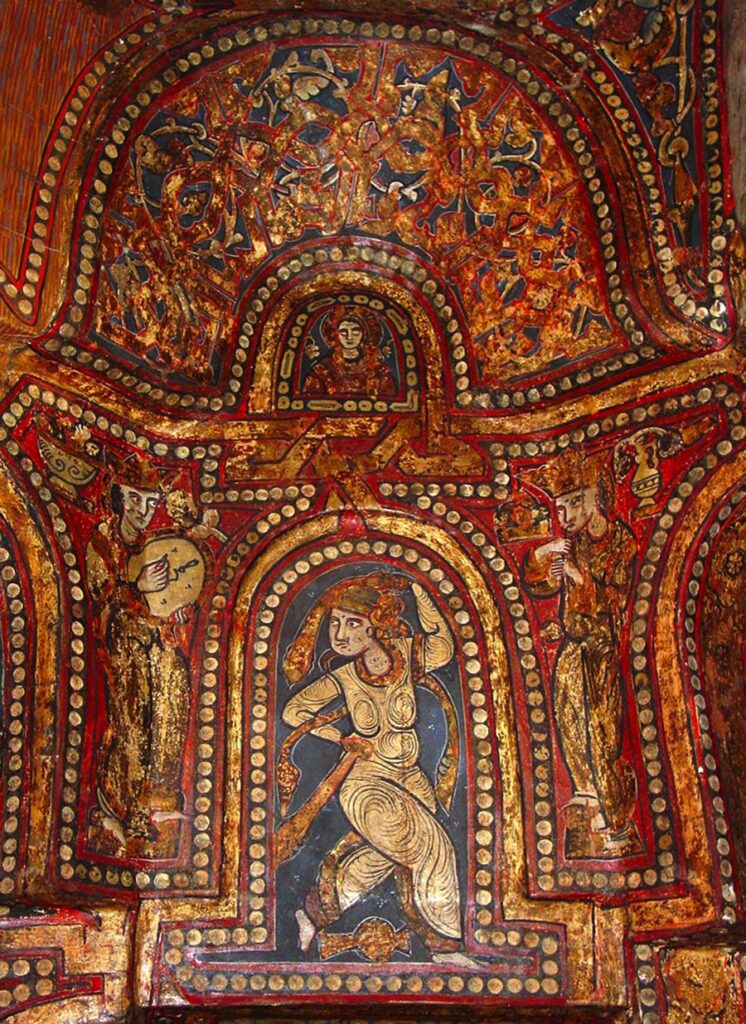 The sovereign, in particular, wears the crown, is often seated on the throne or holds a cup of wine in his hand and is accompanied by servants and musicians.
The sovereign, in particular, wears the crown, is often seated on the throne or holds a cup of wine in his hand and is accompanied by servants and musicians.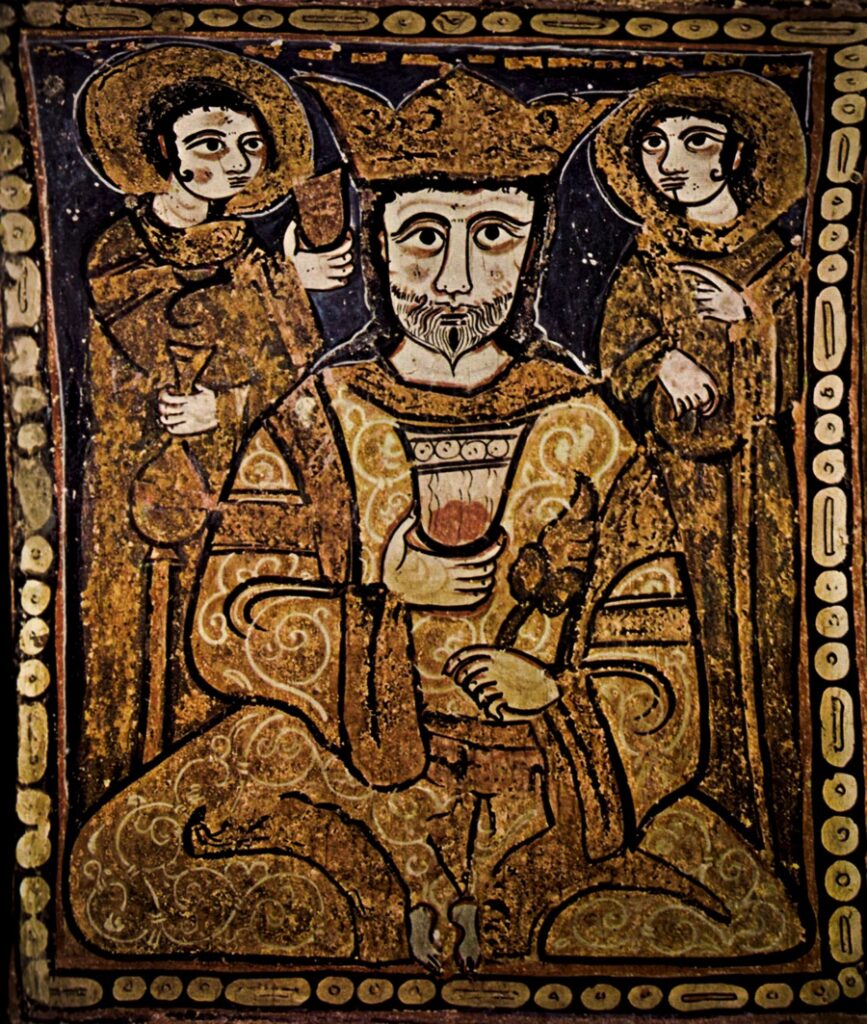 All the scenes are embellished with everyday or precious objects: barrels, cups, vases, bowls, cushions, etc. Other themes, foreign to the Islamic world, are inspired by the Byzantine
All the scenes are embellished with everyday or precious objects: barrels, cups, vases, bowls, cushions, etc. Other themes, foreign to the Islamic world, are inspired by the Byzantine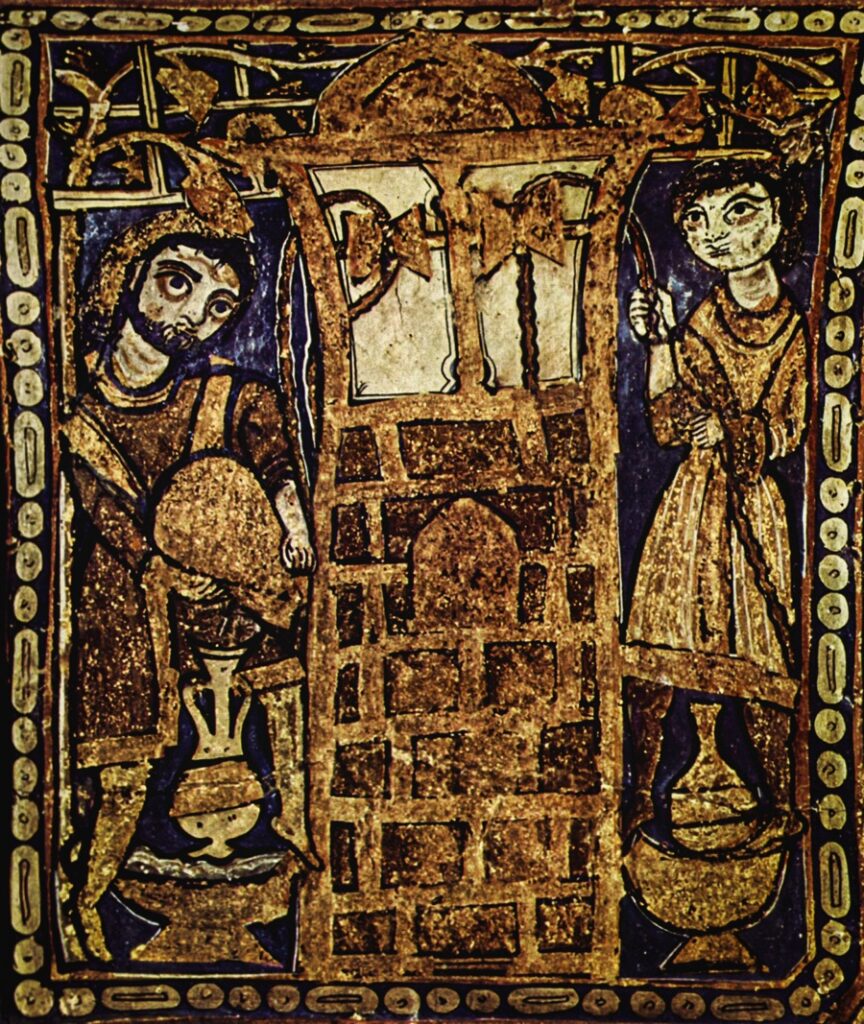
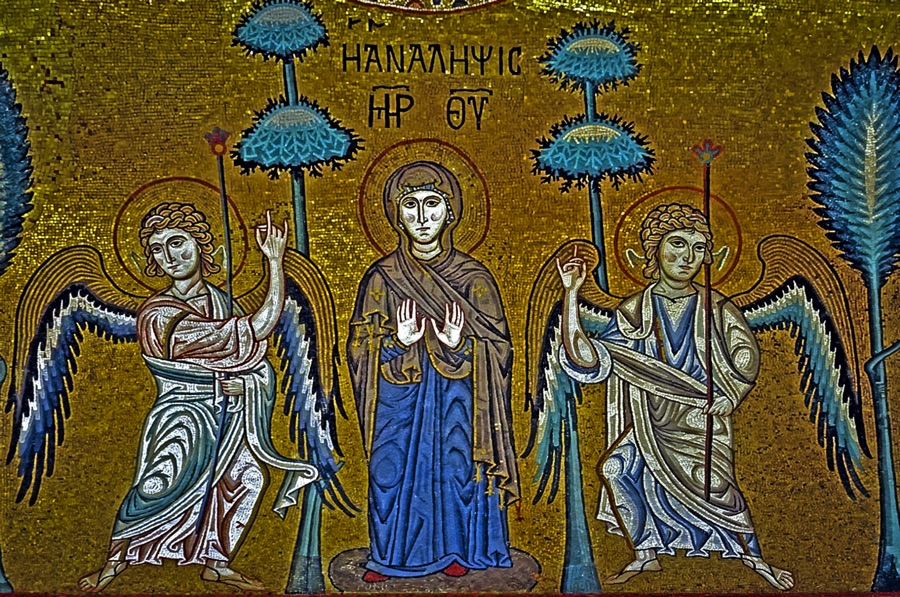 and Christian repertoire: some depictions also allude to the
figure of Christ
and Christian repertoire: some depictions also allude to the
figure of Christ
, while others are taken from the
Bible
. In spite of the religious context, the pictorial cycle of the ceiling is mainly based on secular themes, linked to Arab court life and the world of earthly pleasures and leisure.
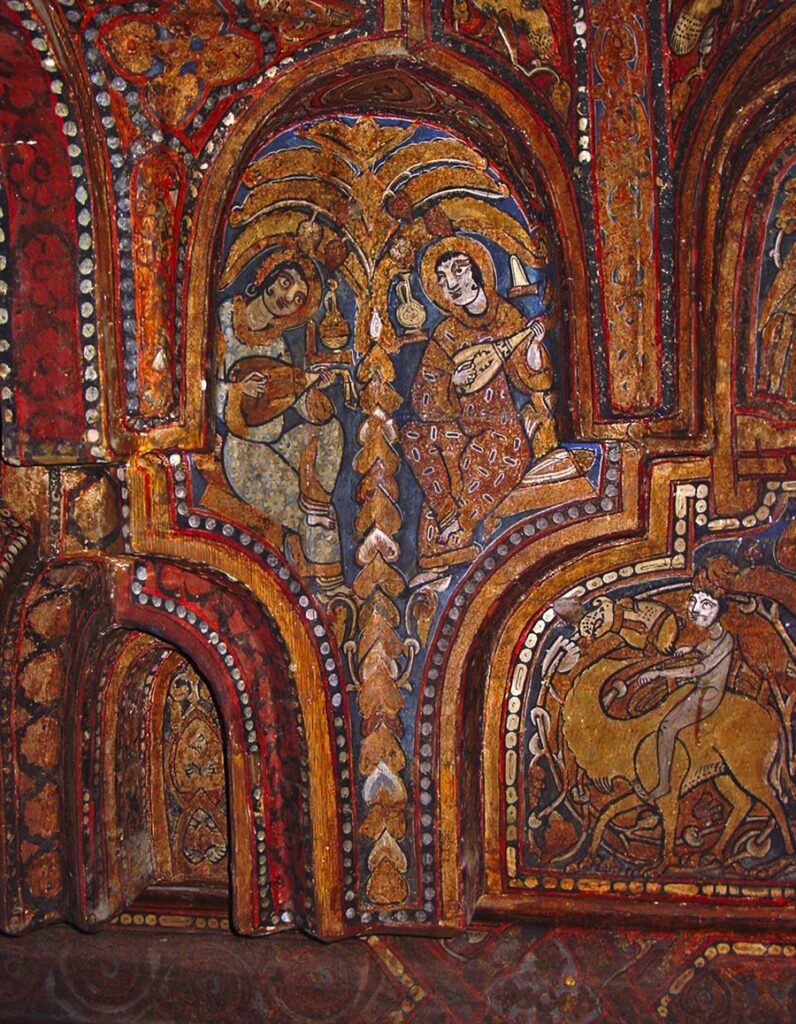 According to one interpretation, while the mosaics, especially those in the
presbytery
According to one interpretation, while the mosaics, especially those in the
presbytery
, celebrate God through the triumphant Christ, the paintings on the wooden ceiling glorify the sovereign and court life. It would be a completely secular meaning, inserted in a cycle that tells, the story of Salvation, like a
biblia pauperum
.
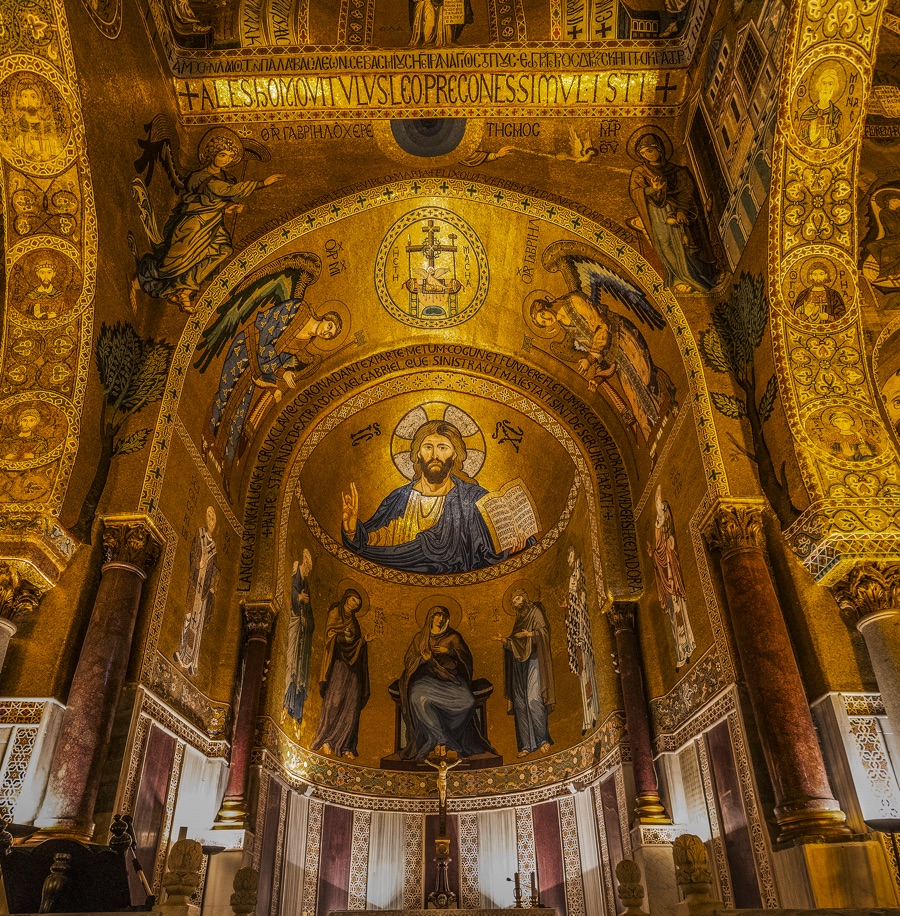 Among the animals depicted, there are birds, birds of prey such as hawks and eagles (often together with their prey), elephants, exotic animals fighting, mythological and fantastic animals such as sphinxes, griffins and harpies. However, the animal that recurs most often is the lion, considered to be royal and a symbol of strength.
Among the animals depicted, there are birds, birds of prey such as hawks and eagles (often together with their prey), elephants, exotic animals fighting, mythological and fantastic animals such as sphinxes, griffins and harpies. However, the animal that recurs most often is the lion, considered to be royal and a symbol of strength.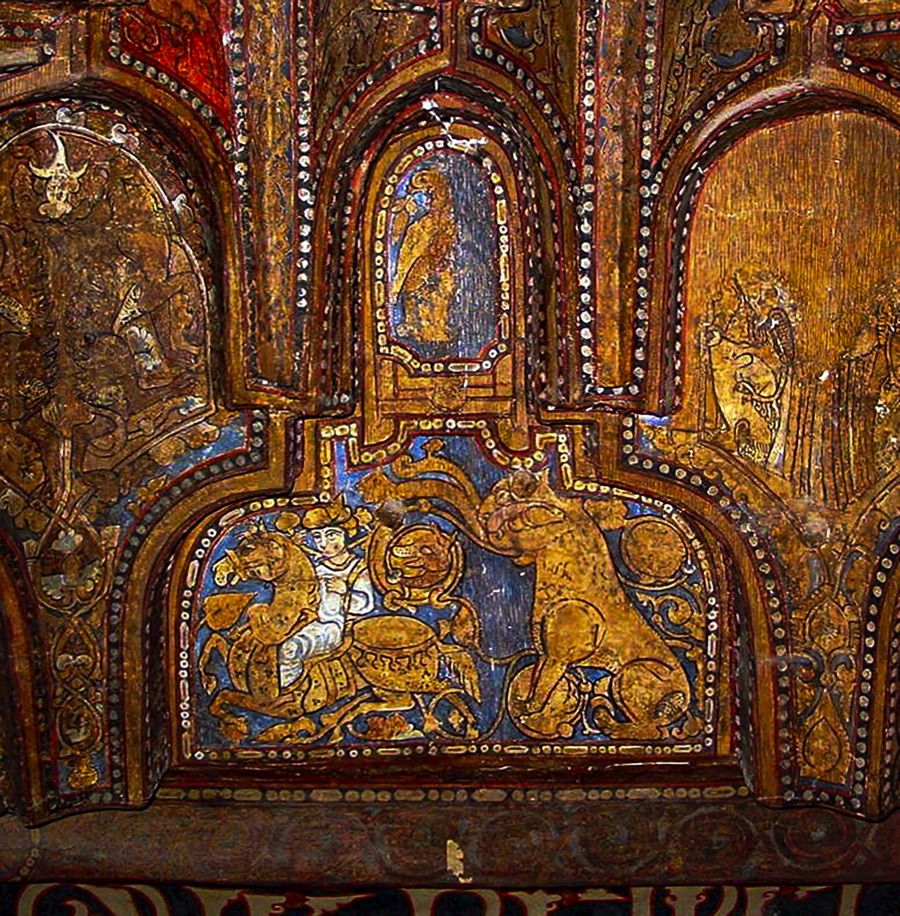
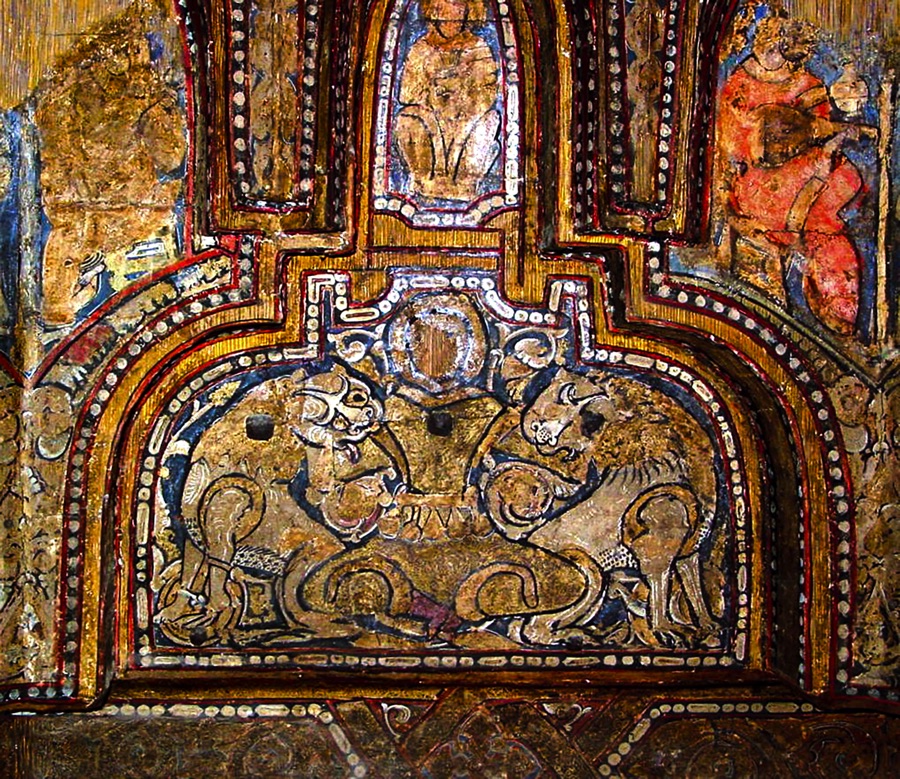 The most commonly used colours are white, black and red, with green borders and red background frames and white pearls made from the following pigments: lampblack, lapis lazuli, titanium oxide, minium, vermilion, lead white, orpiment, then mixed with egg yolk,
The most commonly used colours are white, black and red, with green borders and red background frames and white pearls made from the following pigments: lampblack, lapis lazuli, titanium oxide, minium, vermilion, lead white, orpiment, then mixed with egg yolk,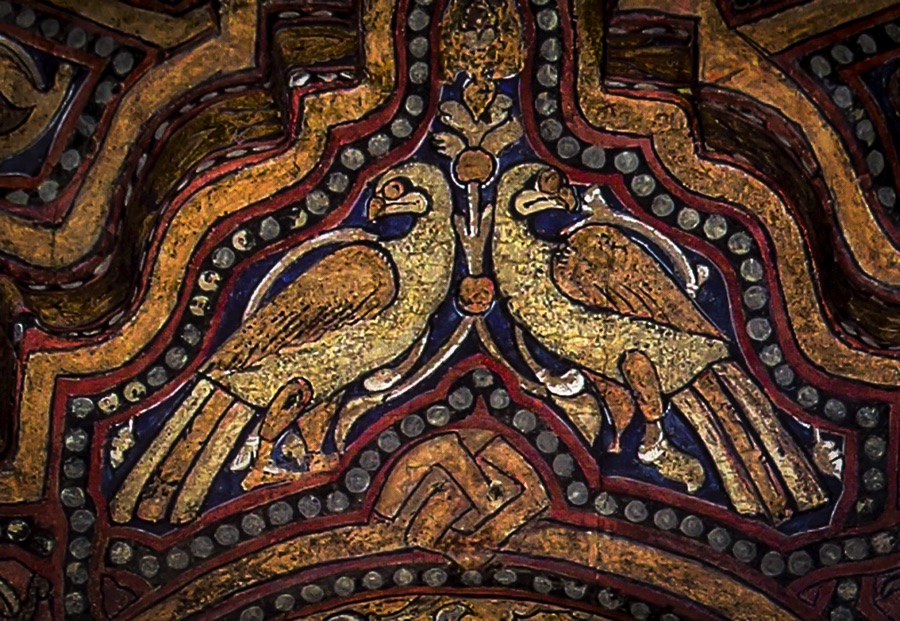 acting as a binder. The latest restorations have also revealed the presence of a pure gold treatment using gold leaf, traces of which remain in the geometric decoration.
acting as a binder. The latest restorations have also revealed the presence of a pure gold treatment using gold leaf, traces of which remain in the geometric decoration.